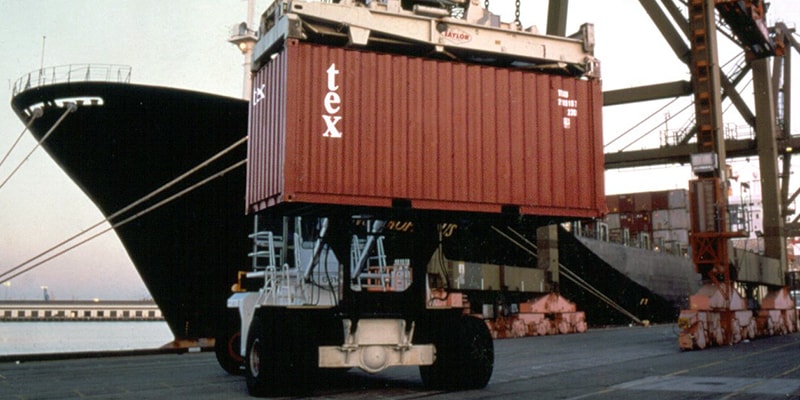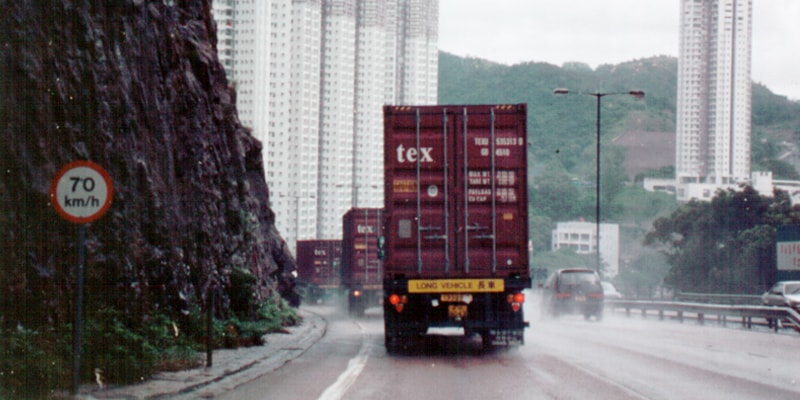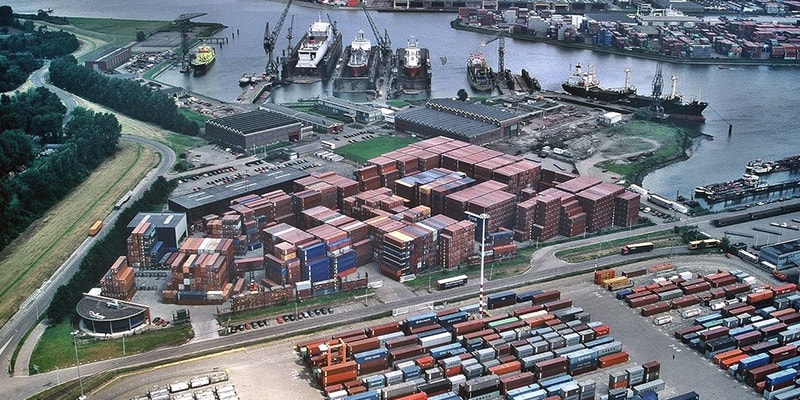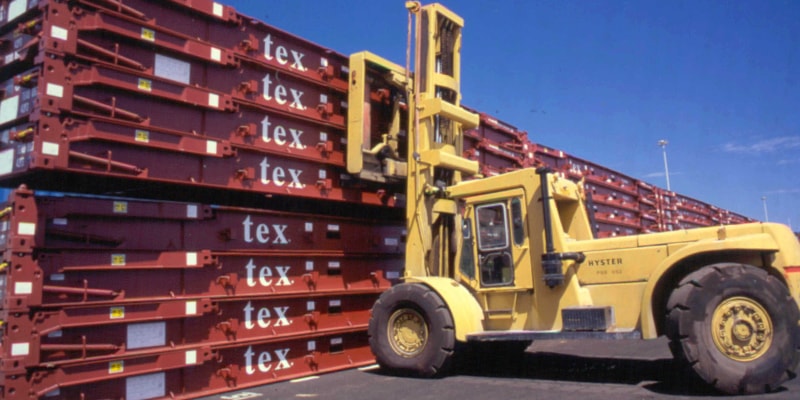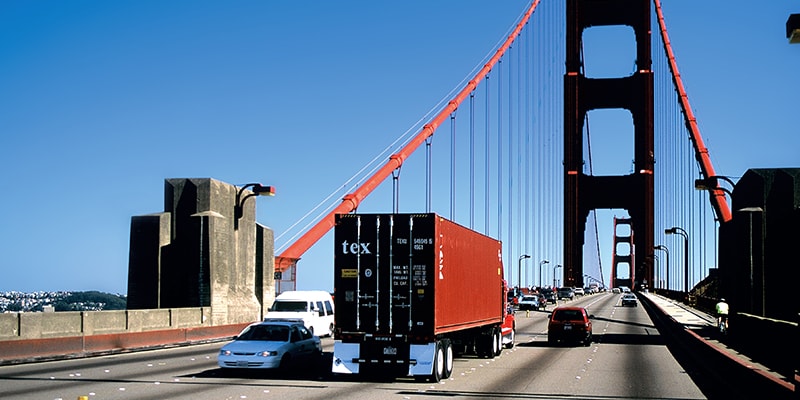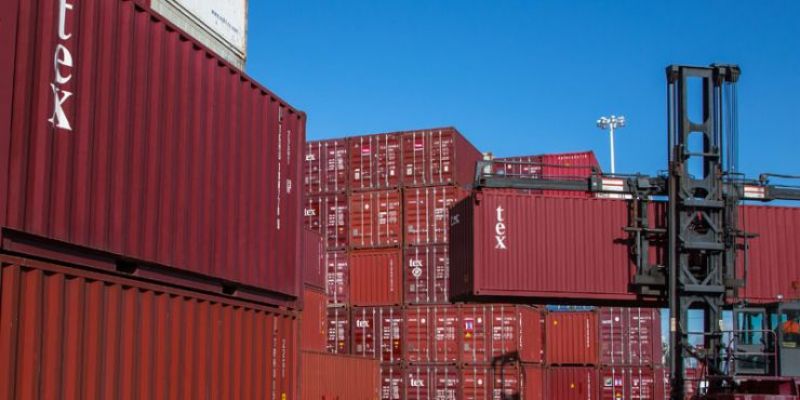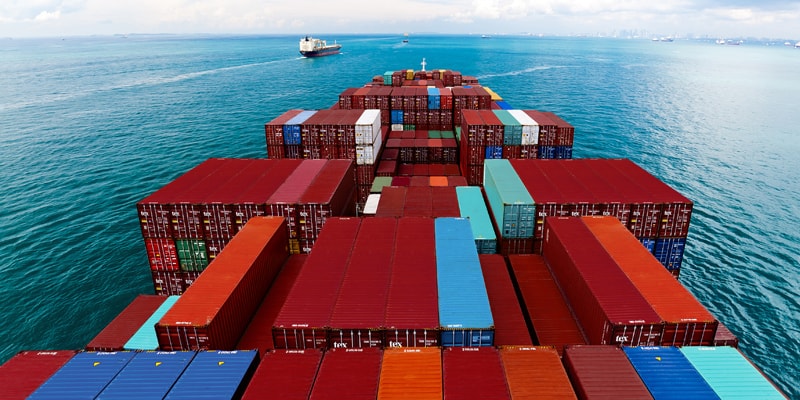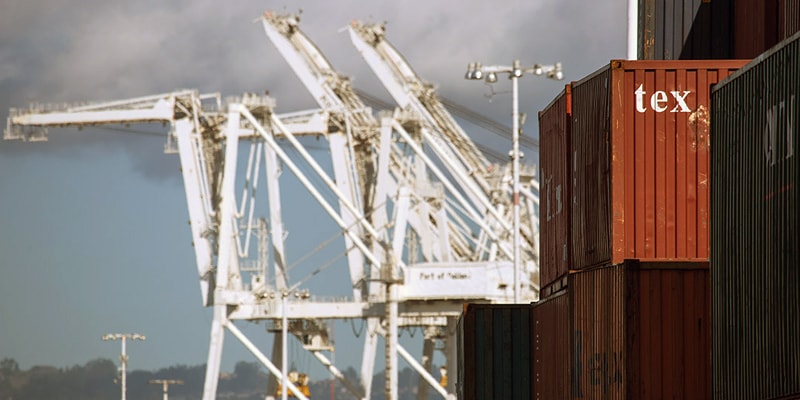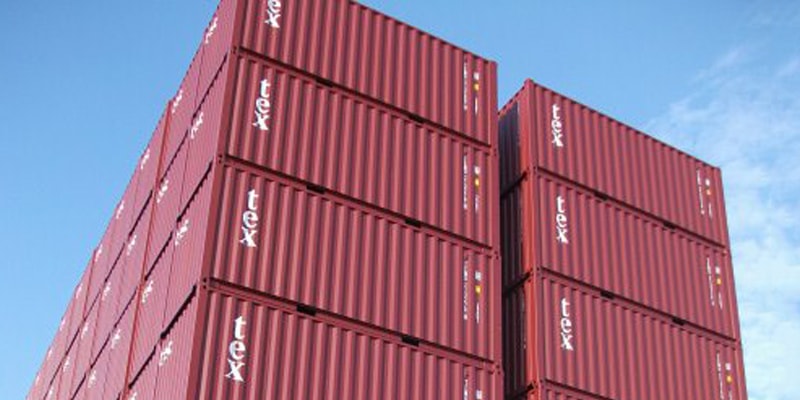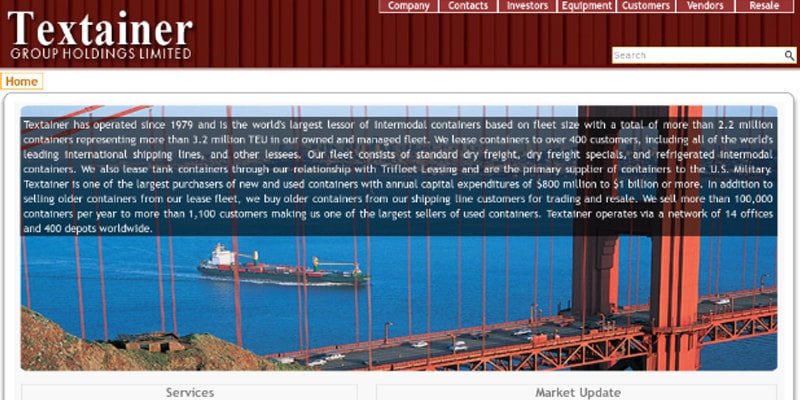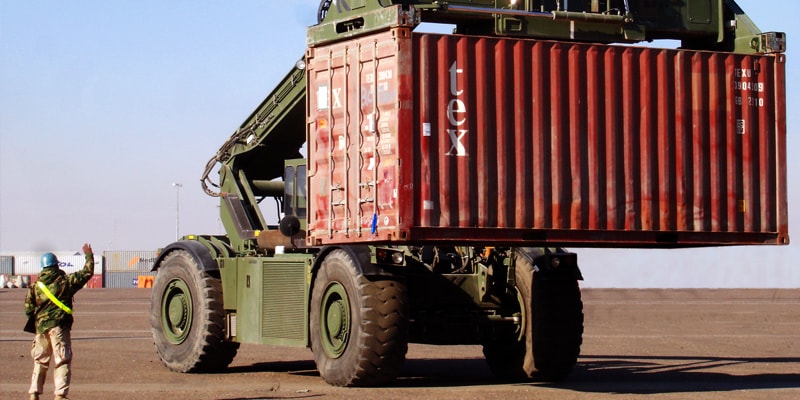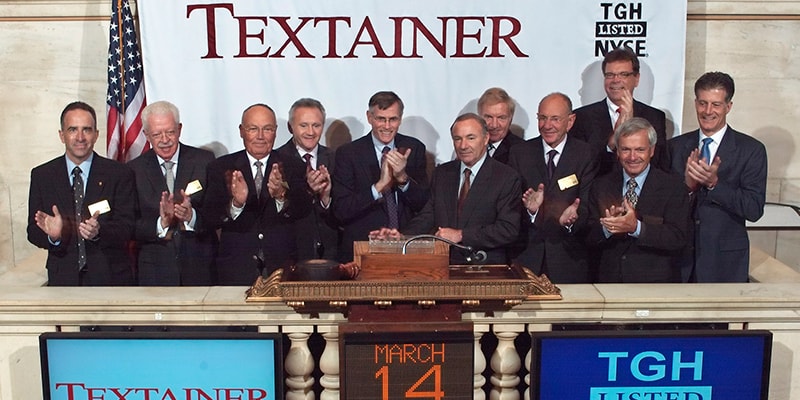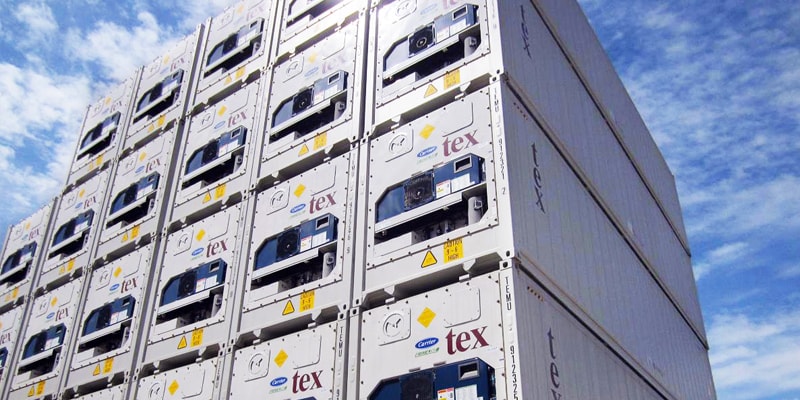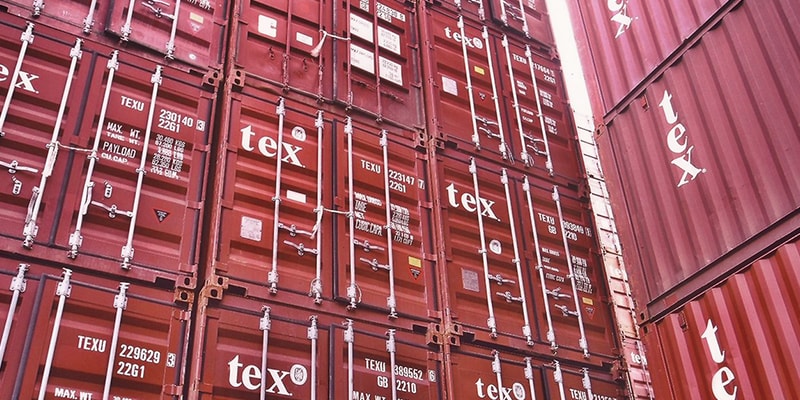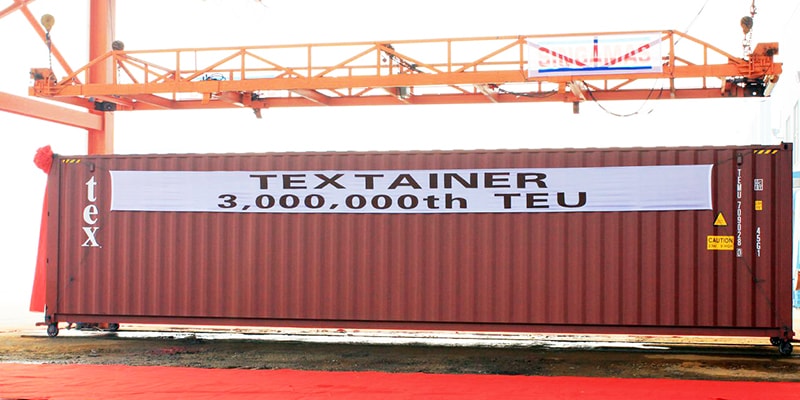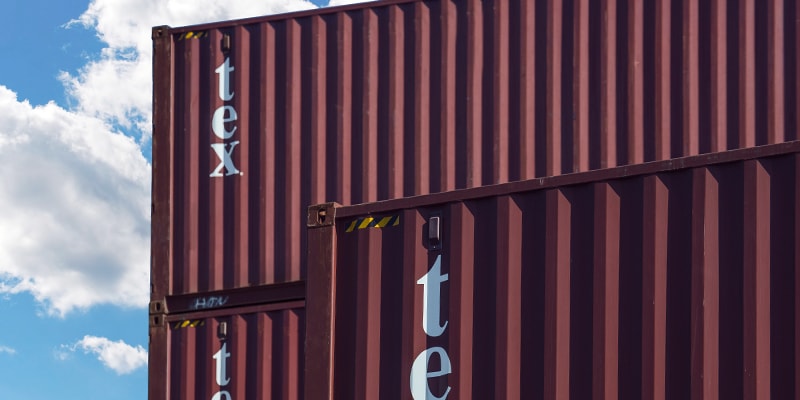Textainer’s Journey
1980
1980
Textainer S.A. is established as a joint venture with James Owens in South Africa to access more investors and expand container investments managed by Textainer.
Fleet Size: 5,000 TEU
1987
1987
Jim Hoelter and John Maccarone join and lead a major restructuring. The company is divided into two separate organizations—Textainer Capital Corporation (TCC) for container ownership and Textainer Equipment Management (TEM) for container management. The first TCC Equipment Income Fund (TEIF I) launches in November raising nearly $30 million by its closing in 1989.
Fleet Size: 38,000 TEU
1991
1991
TEIF II closes after successfully raising its full target of $75 million. The 12,343 TEU MAXU fleet is acquired by TEM.
Fleet Size: 125,000 TEU
1993
1993
TEM has become the world’s fifth largest container leasing company. In December, the company undergoes another reorganization, and Textainer Group Holdings Limited (TGH) is formed in Bermuda with TEM, TCC, and TL (successor to TI) as subsidiaries. All shareholders are consolidated under one entity.
Fleet Size: 262,000 TEU
1994
1994
Textainer enters into its first revolving credit facility for $25 million which is a big step towards growing the owned container fleet. TEIF IV closes having raised $137 million, making it the largest of the six TEIF partnerships.
Fleet Size: 300,000 TEU
1997
1997
The company completes its first securitized debt facility for $175 million, providing a low-cost financing source to further expand the owned fleet. Textainer is also the first container leasing company to achieve ISO 9002 worldwide certification. TEIF VI raises $37 million, and TCC subsequently closes its syndication business having successfully raised a total of $493 million through six TEIF partnerships.
Fleet Size: 475,000 TEU
1999
1999
Textainer takes over management of the 230,000 TEU XTRA fleet. John Maccarone is appointed President and CEO of TGH.
Fleet Size: 847,000 TEU
2001
2001
Textainer completes a $595 million financing which included the issuance of $300 million in bonds marking the first time debt financing is raised outside of the bank market.
Fleet Size: 940,000 TEU
2006
2006
Textainer purchases management rights to the 315,000 TEU fleet of Gateway Container Services.
Fleet Size: 1,528,000 TEU
2007
2007
Textainer completes its Initial Public Offering (IPO), listing its shares on the New York Stock Exchange (NYSE) on October 10, 2007 raising $138 million. Using a portion of the IPO proceeds, the company purchases management rights to the 500,000 TEU fleet of Capital Lease and acquires 50% of TMCL.
Fleet Size: 2,040,000 TEU
2009
2009
A worldwide recession results in the first ever year-on-year decline in the size of the world’s container fleet due to virtually no new container production. Despite the 4% drop, Textainer’s fleet grows by 10% due to the purchase of management rights to the 145,000 TEU Amficon and 156,000 TEU Capital Intermodal/Xines fleets.
Fleet Size: 2,239,000 TEU
2011
2011
John Maccarone retires as president and CEO after 24 years with Textainer and joins the board of directors. Philip K. Brewer is named President and CEO of TGH, and Robert D. Pedersen becomes President and CEO of TEM.
Fleet Size: 2,469,000 TEU
2016
2016
Hanjin Shipping’s bankruptcy significantly impacts the company and dramatically changes the leasing market.
Fleet Size: 3,143,000 TEU
2018
2018
Philip K. Brewer retires as president and CEO after 22 years with Textainer. Olivier Ghesquiere is appointed President and CEO of TGH. Michael Chan is named EVP and CFO. Over 500,000 containers leased out for the year.
Fleet Size: 3,451,000 TEU
2020
2020
Despite the global impact from the Coronavirus Pandemic resulting a slow first half of the year, a dramatic recovery in the second half placed Textainer on an extremely solid footing. Almost $1.1 billion in containers were purchased for 2020, with $925 million more ordered for delivery in 2021.
Fleet Size: 3,775,000 TEU
2021
2021
The continued Coronvirus pandemic and its impact on shipping provided Textainer with a record year for every metric. Container investment reached $2 billion with the containers placed on long term leases with durations over 12 years.
Fleet Size: 4,322,000 TEU


